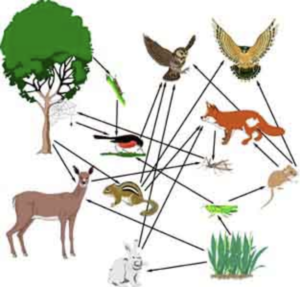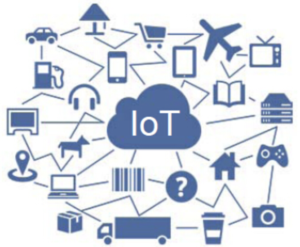Click on the button to load the content from www.linkedin.com.
Category Archives: conflict resolution
Communication
Click on the button to load the content from www.linkedin.com.
Silence: The Innate Power of Sensing People
![]() Photo by Daniele Levis Pelusi on Unsplash
Photo by Daniele Levis Pelusi on Unsplash
Silence makes us vulnerable
We all have had those moments in a conversation when suddenly the conversation stops. The awkward silence begins. You briefly make eye contact, smirk, then look away. Your physiology is triggered. You shift in your seat, scratch a sudden itch, or clear your throat. While trying to quickly think of something to break the silence you have a brain freeze. As long as you are speaking you are keeping your counterpart distracted. You keep them at bay. Consider it a shield of protection. For if you fall silent you become vulnerable. You open yourself up. Your counterpart is no longer distracted by questions. You are both on full display. This is when all senses become heightened. Your self-awareness and awareness of others increases. This is when our humanness comes to the forefront.
Silence is anything but silent
Silence is the absence of sound but not of information. It is amazing how humanly evoking it can be to sit with others and not say a word. An interesting ice-breaker to use with people unfamiliar with one another demonstrates the power of human perception in the absence of words. Create groups of three arranged in a triangle. Two participants through observation and sensing only describe the third person using adjectives and short sentences. This is done three times, each for several minutes, so everyone can be both the observer and the observee. You will be amazed at what people say about each other only by taking in their essence and projected aura.
The lost art of being silent
In the digital age if you are not regularly updating at least one social media account then you are not hip to the play. If you are not Instagramming, Facebooking, YouTubing, tweeting, podcasting, or blogging (guilty as charged), then you are not living in the times. Who doesn’t want to become an influencer? It is not only an actual job but a desirable one at that! Influencers don’t gain followers by remaining silent. Far from it. We are becoming less silent and more vocal and visible as technology and social media give us unprecedented access via a global network. This is not necessarily bad in the sense that we are becoming more transparent and giving public voices to everyone. The problem is with all the chatter, we are losing the ability to pick up important information when nothing is being said.
Accepting silence is to accept our social/emotional connectedness
Silence more often than not is associated with shyness, insecurity, social awkwardness, incompetence, or inattentiveness. Silence, however, allows us to reflect, relax, listen, be open, connect, and access our other senses as a means of taking in our environment and those around us. Recall the triad activity. By becoming less silent we are losing an important human trait that no computer or robot can do. And that is receiving and interpreting data when no verbal transmission exists. Many have watched Sophia–the AI robot–in awe, however, without any verbal precursor, she would just look blankly at you. Her AI is useless without some external stimulus. Even your dog has the social and emotional wherewithal to read your energy as you sit silently. It won’t be long before the silence is broken with a welcoming bark, a friendly nudge, or a sloppy kiss. If you are lucky you may receive all three.
Silence brings quality to our voice and respects others
We have the ability at any time to broadcast any message we want. What if this freedom we take for granted were not possible? What if you could only have one minute a day to say something? Which audience you would choose to address? What would you choose to tell them? What impact or outcome would you like to have? With that freedom comes responsibility. This is the point. Not all of what we say must be thought-provoking, philosophical, or awe-inspiring. However, one’s voice, one’s message is precious. And there are 7.8 billion precious human voices. If we are all speaking at once, who is listening? If everyone wants to be right, then who is wrong? I believe in the 80/20 rule. We have two ears, two eyes, and one mouth. So 80% of the time we should be listening and observing and speaking only 20% of the time.
Silence brings you to the point
Silence in a conversation gives space for those involved to simply sit. Sit with what has been said. Sit with the thought of whether the conversation is on the right path, needs to shift, or simply needs to end. All results provide valuable feedback on what next step to take. Senior Forbes Contributor, Avery Blank’s article, “6 Ways Leaders Use Silence To Increase Their Power (And You Can, Too) provides additional insight into the value of harnessing the power of silence. So next time you find yourself in that awkward silence do not be so quick to break it. Relax, breathe, and embrace it. See it as a gift. In some cases, it can bring you to the point more quickly than a barrage of questions. Use it to take in other valuable nonverbal aspects of communication that are so vital to how we humanly connect and relate with others.
About the Author
Jean-Pierre Kallanian is a Human Systems Expert specializing in conflict resolution, intergenerational dialogue, and psychological safety. He is also a Youth Coach, Author, and Speaker. As the creator of the EPIC Model, Jean-Pierre brings out the expertise in groups by revealing patterns and refining human systems in real-time!
VUCA: From A System And Problem Focus To A Person And Solution Orientation
VUCA needs a new meaning and focus
Acronyms like VUCA are useful in labeling and giving importance to complex themes. Labeling a problem soothes the mind by identifying something hard to understand. The hope is then to find a solution. What if the solution were in the acronym? What if the problem-focused and system-oriented VUCA acronym became solution-focused and people-oriented? The angst derived by the former would diminish and the optimism derived by the latter would flourish. People solve problems and influence systems. So wouldn’t it be wise to promote solution-orientated attitudes and behaviors?
VUCA people transform VUCA situations
What do adolescents, first-time parents, adults in a mid-life crisis, or anyone facing a life-altering event tell you? Life is VUCA. Digitalization and globalization may be intensifying VUCA, but it isn’t anything new. What if instead of associating VUCA as a volatile, uncertain, complex, and ambiguous world to dread, it was linked to Virtuousness, Understanding, Compassion, and Adaptability? Instead of being at the whim of a VUCA world, these essential human skills foster life-long learning. What effect would this reframing of VUCA and consequent skill acquisition have on our human development?
Virtuousness contains volatility
The online Cambridge Dictionary defines virtuous as “having good moral qualities and behaviors.” Fears have a tendency to rise in volatile situations. Drastic fluctuations, therefore, influence people to act impulsively with short-term results and immediate gains. A selfish mentality can develop. “Take what you can now before it is too late!” This perturbed mindset can lead to rash and immoral reactions. The accumulation of unethical decision making on a large scale in times of volatility ironically increases and compounds the volatility one wishes to diminish. A strong moral compass helps contain volatility. Virtuous people are stabilizers in times of instability.
Understanding reduces uncertainty
The online Cambridge Dictionary defines understanding as “knowledge about a subject, situation, etc. or about how something works.” How should one deal with uncertainty? Be mindful of what is in your control/what is known. Seek guidance to understand that which is uncertain or not completely known. Educate yourself. Ask questions. Conduct your own research. Simply put, be curious and learn. There is nothing more conducive to festering uncertainty than a fixed mindset, or solely relying on hearsay or one source of information. Fear of the unknown is best dealt with by keeping an open mind and understanding other realities.
Compassion humanizes complexity
The online Merriam-Webster Dictionary defines compassion as the “sympathetic consciousness of others’ distress together with a desire to alleviate it.” With nearly 8 billion people navigating complexity each day no one is exempt and no one goes unscathed. Unchecked complexity can lead to victimization and potential harm. Therefore, we need to show our compassion. Compassion humanizes the negative consequences of unresolved complexity by fostering inclusivity, a helping attitude, and raising social awareness at all levels. The pervasive, inclusive, and multi-leveled effort of the current Black Lives Matter movement is a case in point. Compassion ensures that we acknowledge how complexity impacts us all. And as importantly, it illustrates the vital role we all play in dealing with it.
Adaptability neutralizes ambiguity
The online Oxford Dictionary defines adaptability as the “quality of being able to change or be changed in order to deal successfully with new situations.” As creatures of habit, we adopt routines to creatively deal with ambiguity. Being too reliant on a fixed routine or way of living, however, can have limitations when an unforeseen significant event occurs. COVID-19 has been disrupting the routines and habits of millions of people. The further our fixed mindsets stray away from an ever-changing world reality the more we are confronted with this widening gap. This is illustrated in the digital paradox. Unfortunately, it takes a global pandemic like COVID-19 to remind us that we are not masters of the universe. Rather, we are a part of it. And as such, we, like all other living organisms, must either adapt to changing circumstances or face unnecessary hardship.
VUCA people need to be nurtured and engaged
It is high time we better deal with volatility, uncertainty, complexity, and ambiguity. Fortunately, with a change of perspective and focus, the answer may be hidden in the same acronym. With virtuousness, understanding, compassion, and adaptability one is better able to cope with VUCA situations. All humans have the capacity to develop and practice these life-long skills. Doing so feeds a growth mindset and cultivates a collective consciousness focused on posterity. Younger generations see the value and need of being VUCA. We are seeing more VUCA people organizing in greater numbers across continents and for causes affecting all humans everywhere. Progressive companies also reap the benefit of developing human edge cultures. In sum, VUCA people are essential for a VUCA world.
About the author
Jean-Pierre Kallanian is a Human Systems Expert, Conflict Resolution Specialist, Change Facilitator, Youth Coach, Author, and Speaker. He accompanies individuals, teams, and organizations wanting to fully integrate their human potential. As the creator of the EPIC Model, Jean-Pierre brings out the expertise in groups by encouraging authenticity, intention, and collective wisdom.
Effective Leadership – A Changing Of The Guards
What is effective leadership anyway?
The Online Oxford Dictionary defines leadership as the action of leading a group of people or an organization. Additionally, it defines effective as successful in producing a desired or intended result.” Simply put: Effective leadership is the capacity to successfully guide the intended or desired action(s) of a person or group. According to this amoral definition, any person or group of people versed in rhetoric and/or subversive tactics can display effective leadership. But we know this not to be true. Ethical intention and the means by which outcomes are achieved are paramount.
Essential components of effective leadership
Organizations seeking effective leadership must look beyond outcome achievement. As the current global reality demonstrates, the ends no longer justify the means. Personal integrity, social competencies, economic equity, conflict transformation, transparency, environmental stewardship, posterity, ethical conduct, and inclusivity (age, gender, race) need to be at the core of effective leadership requirements and competencies. First, companies must clarify the intention of effective leadership. Second, this raison d’être should elicit an authentic response in every individual inspired to heed the call. Lastly, leadership needs to have the capacity to skillfully and creatively orchestrate the collection, the aggregate of these diverse individual entities in order to bring the intention to fruition. How should leadership ethically and equitably influence your organization? What sustainable methods should leadership use to reach objectives? How inclusive should processes be? How should leadership ensure that all stakeholders benefit from the outcome?
Effective leadership ensures economic equity
According to the Credit Suisse Global Wealth Report, the world’s richest 1 percent, own 44 percent of the world’s wealth. Adults with less than $10,000 in wealth make up 56.6 percent of the world’s population, but hold less than 2 percent of global wealth. Effective leadership needs to become financially transparent, sustainable, and equitable for posterity’s sake. Universal economic opportunity needs to be at the forefront of all policies. Leadership needs to ensure that all humans have fair and equal access to both natural and artificial resources necessary to sustain a proper standard for living (access mental and physical healthcare included) and provide for a family when desired without jeopardizing career development.
Effective leadership is inclusive
The most translated document in the world is the United Nation’s Universal Declaration of Human Rights. To date, it has been translated in 370 languages. Why? In addition to preserving the environment, without which humans could not exist, there is nothing more fundamental than ensuring the basic rights of all human beings. For example, which traits allowed women-led nations to cope well with COVID-19? Likewise, how can improving racial/ethnic balance in leadership better ensure basic human rights? Leadership is appropriately and ethically represented across gender and race when the ratio of those in leading roles are proportionate to those being led.
Bright Spots in closing gender and racial gaps
In 2018, Glassdoor partnered with JUST Capital to look at major corporations committed to equal pay. Remarkably, only 16 out of 920 publicly traded companies, the likes of Microsoft, VMWare, and Salesforce–just to name a few–were ensuring pay equity across gender and racial and ethnic lines. As companies close gender and racial/ethnic gaps and governments ensure human rights for all citizens, effective leadership promotes values that are transparent, ethical, equitable, sustainable, and inclusive.
Effective leadership entails environmental stewardship
The Internet of things (IoT) entails everything connected to the internet. So too are we interconnected with all living things (IoLT). When nature is out of balance so are we. We are an integral part of nature. We cannot survive without a healthy and diverse environment. As such, it is our human responsibility to care for our use of it. Environmental stewardship refers to responsible use and protection of the natural environment through conservation and sustainable practices. Aldo Leopold (1887–1949) championed environmental stewardship based on a land ethic “dealing with man’s relation to land and to the animals and plants which grow upon it.” (source: Wikipedia)
Effective leadership is intergenerational
Leadership roles in traditional organizations are often held by those who are one, two, or even three generations older than those being led. This alone is not a problem. Actually, there is a wealth of potential here. It can become an issue, however, when senior leadership is unable to incorporate the values and intentions of the younger generations of those they lead. Intergenerational learning is paramount in mutually acknowledging and integrating old and new forms of leadership. Companies who can do so will become more resilient and have an easier time ensuring an organization’s vitality. How can organizations with older forms of leadership give space for newer forms of leadership?
Acknowledging a changing of guards
Each generation has a new ideal of what effective leadership entails. Young people feel unheard and are quick to dismiss older mentalities as antiquated. Older people hold on to long-held beliefs are quick to dismiss newer realities as not being time-tested. A lack of mutual acknowledgment and respect prevents a seamless integration or transition of leadership styles. When all generations can honor the wisdom each brings, then there is an opportunity for dialogue, transformation, and growth. Newer companies and start-ups have an easier time implementing newer forms of leadership and organizational management since most employees belong to one or at most two generations. How can newer forms of leadership be given space in older and larger organizations where three or four generations are working together? As with all changing of the guards, the process must be honorable, on-going, and inclusive.
About the author
Jean-Pierre Kallanian is a Human Systems & Group Dynamics Expert, Conflict Facilitator, Youth Coach, Author, and Speaker. He accompanies individuals and teams wanting to fully integrate their human resource potential at all organizational levels. As the creator of the EPIC Model, Jean-Pierre brings out the expertise in groups by encouraging authenticity, intention, and collective wisdom.
COVID-19: The Outer And Inner Leadership Test
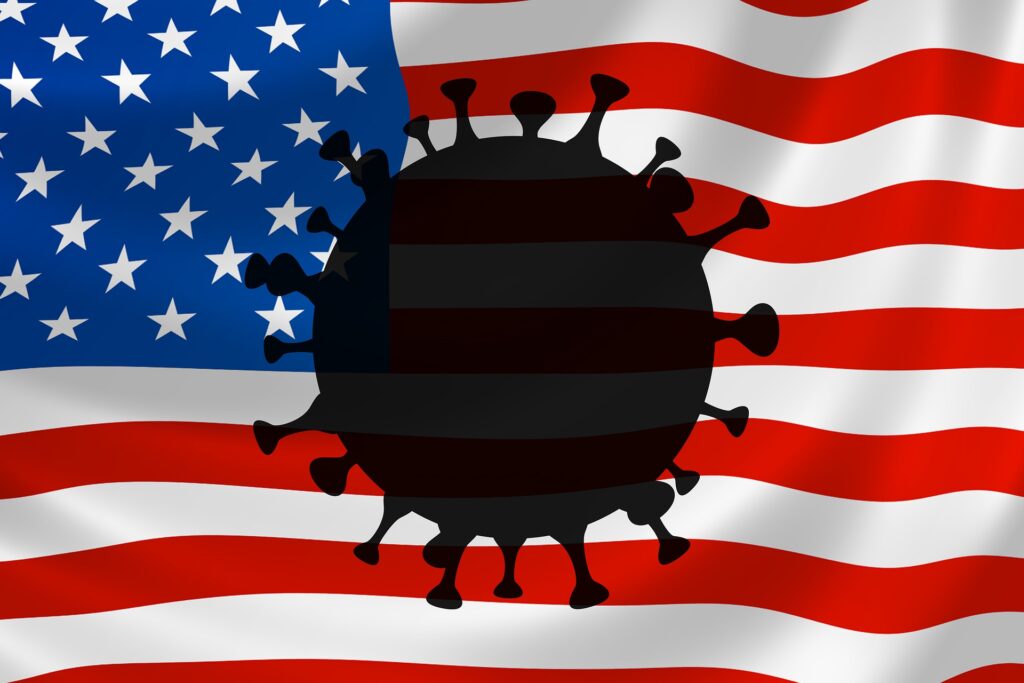
COVID-19 knows no socio-economic boundaries and is not intimidated by legal action, social media, political antics, economic sanctions, and military force
COVID-19 has no regard for titles or authority as officials, Hollywood actors, and sports stars test positive. You cannot take legal action against it. Stonewalling will not make COVID-19 disappear. Name-calling will not shame it. Social media smear campaigns only increase its ability to mislead potential victims. Neither bribery, blackmail, nor hush money will make COVID-19 go away. You cannot levy a tax against it or block it by building a wall. So what is left in the bag of tricks of so-called leaders faced with a humanitarian crisis of epic proportions? COVID-19 can not even be eradicated with the combined use of all the world’s military might ($2 Trillion dollars global yearly spending). Imagine how $2,000,000,000,000 could help R&D find a cure. Imagine how this unfathomable amount of money could help SMEs, vulnerable populations, and families all over the world affected by the economic impact of COVID-19.
COVID-19 is the World’s Mid-Life Crisis
It usually takes a significant medical issue or some personal crisis for a person to stop and reflect on life. Your health and well-being is number one as is that of Earth. What price do you put on your health and environmental well-being? COVID-19 is shining a bright spotlight on our collective welfare. It calls into question the equality of current global economic systems. It makes evident the gaps in social welfare systems. COVID-19 makes us ask questions like what is it all for? What is really important in life? Who truly benefits from my time, talents, and energy?
COVID-19 calls into question our human existence
This is a rapidly changing situation requiring millions of people to continuously adapt, refocus, and remain calm, while not forgetting about the simple human kindness and consideration that will help us all get through this. Millions more are sacrificing their safety to ensure others remain healthy. Are we doing all this just to get back to business as usual as we did after the 2008 financial crisis? What did we learn from that economic collapse? Do you remember who was responsible for creating a volatile and fragile system? As you hunker down in your abode with family and loved ones, there is no shortage of time to reflect on what really is important in your life. What realizations have you since come to recognize? What changes have you already made to your lifestyle that you would like to keep going forward even after the impact of COVID-19 diminishes?
COVID-19 calls upon true leadership
COVID-19’s greatest ally is leadership incompetency. It has an uncanny ability to show a leader’s true ability to lead in a time of crisis. COVID-19 separates leaders who pretend they know how to lead from those who actually can. COVID-19 relentlessly spreads each time a leader fails to transmit the social gravity of isolation for the sake of personal, political, or economic gain. Taiwan has been a beacon of the leadership needed in such a crisis due to an educated vice-president. Those responsibly leading nations, however, do not need to be epidemiologists as is the case with Chen Chien-jen. They do need to consult closely with experts in the field who know how best to respond to such situations. Leaders in times of crisis know how to deliver clear and concise directives. They know how to instinctively inspire people to act calmly, rationally, and collectively.
COVID-19 ultimately demands inner leadership
COVID-19 is a top priority for all country, state, and local leaders. The real leader, however, in combating the spread of COVID-19 is you! COVID-19 is a serious example of why competent inner leadership is as crucial in such times as outer leadership. It is the epitome of VUCA (Volatility, Uncertainty, Complexity, and Ambiguity). The #staythefuckhome movement is a prime example for the emphatic call to lead from within. We all have the wherewithal to choose our part in either spreading or containing the virus. A simple individual decision like self-isolating and reducing social contact taken by masses of people helps reduce the risk of furthering the spread of this contagious and life-threatening virus. As the world becomes more complex individual decisions and actions–inner leadership–will become more necessary in overcoming global challenges to achieve shared human goals that impact us all.
About the author
Jean-Pierre Kallanian is a Human Systems Facilitator, Executive Coach, Youth Expert, and Speaker. He accompanies organizations in fully integrating their human resource potential by facilitating group processes that foster authenticity, intention, and collective wisdom. He is the creator of the EPIC Model of development and the author of What You Can Learn from Your Teenager: Lessons in Parenting and Personal Growth.
For more information on how companies can better cope with VUCA by encouraging employee empowerment read my blog on Human Edge Cultures
How to effectively navigate difficult conversations at work

What are difficult conversations?
Difficult conversations are those where a real or imagined fear of addressing a serious matter is equal to or supersedes the issue itself. In the workplace, this could be mediating a conflict between colleagues, confronting allegations of misconduct, placing an employee on leave as a result of an investigation, and involuntary termination. Difficult conversations tremendously impact one or more of a person’s basic needs and can result in shame, embarrassment, feelings of incompetence, or anger. Although these immediate outcomes are all possible, they can be alleviated.
Address difficult conversations as soon as possible
Issues at work grow in scope and scale the longer they go unaddressed. They can even take on a life of their own. Coworkers and even customers and clients can feel rising tensions. This was of particular concern in the group home for youth I oversaw where clients were around 24/7. Residents overheard quarrels and took sides, making matters worse. This created a toxic work environment and derailed the program’s purpose. Immediately addressing issues minimizes this risk. It also builds employee trust. A quick and prudent intervention shows that management is both confident and competent in maintaining a harmonious, safe, and ethical workplace. It supports and validates those who live and breath your mission.
Document, document, document
Difficult conversations are usually preceded by one or more notable events worthy of documentation. Hindsight is 20/20. The trick is to have 20/20 foresight. The way to facilitate difficult conversations is to sense potential personnel issues before they reach critical mass. Address and document precursors. Take the warning signs seriously. It is imperative to document supervisions and warnings. Documentation provides evidence to support an impending difficult conversation. All parties should sign all documented conversations. Signatures acknowledge that a conversation took place.
Have a policy on staff conduct
Explicit rules and expectations on employee conduct and how personnel issues are addressed send a clear message that attitude and behavior matter to the organization and are enforced. My management and leadership experience was with unionized staff. Most managers shudder at the mention of a union. HR and the union helped me resolve personnel matters in accordance with a set of rules. Yes, I sometimes could not terminate unfit employees sooner than desired. At the same time, all employees felt safe knowing that there were clear procedures.
Be fair
There is nothing more important than when employees feel that they have been fairly treated. It reached the point where even my union steward felt I was sometimes too lenient. This was to my advantage. I have had the unfortunate task of involuntarily terminating staff and not one resulted in a grievance. On the contrary, most resulted in a parting handshake with no hard feelings. Some even thanked me for the opportunity as they walked out the door. Staff knew that if they were being let go–except in cases of gross misconduct where termination was immediate–that any of the following had previously occurred: supervision, previous warnings, EAP referral, corrective action, and collaboration between the union steward and management. In other words, there were no surprises and therefore little for management to fear.
Bring in a 3rd party
Include a 3rd party or observer when conducting difficult conversations. In my case, it was the union steward and my assistant director. As a manager I was not in the union, however, the union steward protected me as much as the employee. He became a trusted advisor in handling personnel issues. A 3rd party is recommended for several reasons. First, there is a witness in case of future litigation. Second is professionalism. The meeting can be debriefed and reviewed. The third is safety. If one is having difficulty advancing the conversation the other can take the lead role. In the event of a complete communication breakdown, the 3rd party can mediate or stop the meeting. In general, we are more likely to be on good behavior when we know there are witnesses.
It isn’t personal, it’s about the company
Leaders or managers who stand behind a clear purpose or mission have an easier time addressing difficult conversations because it is not personal. It’s about the company’s purpose. Having an overarching focus on something greater than the individual parties involved puts the matter at hand into perspective. It depersonalizes the situation. In my case, the program I led was responsible for the care and welfare of 20 at-risk youth. The program was situated in the middle of a residential area with friendly but wary neighbors. Trust was everything. All staff knew that any safety or security breach or conduct violation warranted a potentially difficult discussion. Employees were dedicated and passionate about helping young people. The program was well respected by the funding source, the company, and competing NGOs. Employees enjoyed working there as was evidenced by a staff retention rate 3 times higher than the national average.
More tips on handling difficult conversations
For additional practical tips on handling difficult conversations check out articles from Psychology Today and Forbes.
About the author
Jean-Pierre is a Human Systems Expert, Process Facilitator, Youth Specialist, and Speaker. He optimizes employee engagement and leadership potential by counseling leaders and enhancing group dynamics. He is the creator of the EPIC Model of development and the author of What You Can Learn from Your Teenager: Lessons in Parenting and Personal Growth.
VUCA: How companies can reap the rewards
Rediscovering VUCA
VUCA is an acronym that most in the business world have become familiar with. It is the result of an ever-increasing flow of data and information in conjunction with increasing distrust of data and information. This duality not only impacts economies and politics. It fundamentally affects how we interact and treat each other. I recently learned of the VUCA acronym at a presentation by Google’s Country Manager Adriatic Region, Joško Mrndže. Here is the irony. The acronym was unfamiliar to me, however, as Mrndže continued talking about VUCA, the hairs on my arms straightened. As he spoke I was transported back to the almost two decades I had dedicated transforming extreme manifestations of VUCA.
Clarifying VUCA
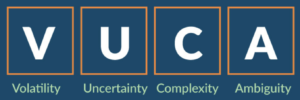
Volatility – the quality or state of being like to change suddenly, especially by becoming worse.
Uncertainty – a situation in which something is not known, or something that is not known or certain.
Complexity – the state of having many parts and being difficult to understand or find an answer to.
Ambiguity – the quality of being open to more than one interpretation; inexactness.
What the VUCA is going on
Left unchecked VUCA can wreak havoc on any community, organization, team, or individual. For most of my years in social work, I was responsible for managing volatility, uncertainty, complexity, and ambiguity in the lives of hundreds of young men in conflict with the law. Our job was to transform VUCA into positive energy and outcomes. We were tasked with ensuring that its devastating impact did not harm anyone, overrun the program’s culture, or spill into the neighboring community. One can imagine how the life of a young person coming from a home of domestic violence, abuse, and/or neglect can result in VUCA. Add to that any of the following pre-existing conditions: trauma, alcohol/drug addiction, gangs, learning disabilities, truancy, emotional dysregulation, poverty, and psychiatric illness.
Psychological safety transforms VUCA
The importance of psychological safety in companies is a coping mechanism for VUCA. This is a top priority for leaders. Work environments are psychologically safe when:
A code of conduct exists and is practiced
Physical/Environmental safety is assured
Employees are entrusted to do their job
Systems and procedures promote fair treatment
A mentoring culture exists
Employees are supported in times of need
Good work is recognized
An open feedback culture exists
Personal and professional development is encouraged
Employees feel a sense of belonging
As the director of a group home, I could not control what was happening outside the walls of my program. My energy went to influencing the staff and residents inside by fostering a trusting and caring environment. A safe haven in a sea of uncertainty allows people to harness VUCA’s creative and innovative potential.
Living la Vida VUCA
Vulnerability, uncertainty, complexity, and ambiguity are not always unwanted conditions. Moreover, they can never be fully eradicated, nor should they be. When a safe haven to deal with such incalculable conditions exists, VUCA promotes creativity and innovation. Some of the most out of the box thinkers I have met were the young men under my care. Living a VUCA life creates an agile mind. People comfortable with instability are flexible and adaptable. As VUCA increases in a digital world so does the need for societies and organizations to create conditions for humans to effectively and efficiently deal with it. Ensuring psychological safety permits people to have the peace of mind to learn and grow from incalculable and unknown variables.
About the author
Jean-Pierre Kallanian is a Process Facilitator and Human Systems Expert. He accompanies organizations in fully integrating their human resource potential by facilitating group processes that foster authenticity, intention, and collective wisdom. He is also the author of What You Can Learn from Your Teenager: Lessons in Parenting and Personal Growth.
Creating An Observer-Actor Culture
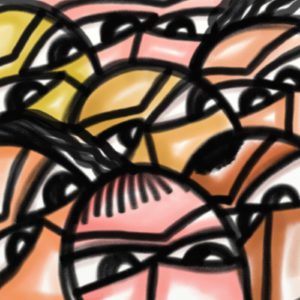
Leaders Need More Than Observers
In a world of information overload, a leader’s ability to be the sole key observer in keeping an organization abreast of trends, innovations, and market changes is diminishing. There is an ever-increasing multiplicity of social, economic, technological, environmental, and political factors impacting the business cycle. Leaders depend on the keen observation of others, but observation alone without action falls short. Observation without the ability to act is not only a missed opportunity, it is a step backward. Because standing still is as good as going in reverse. In today’s world, there are strong currents adrift. Knowing a current is taking you out to sea and doing nothing about it will still result in you being swept out to sea. How can leaders create an observer-actor culture to maximize the benefits of what is being observed?
The Observer Obsession
According to the Oxford Living Dictionary, the verb observe is to notice or perceive (something) and register it as being significant. Do what employees deem significant match what management deems to be? Collective opinions matter. To add some perspective, on just one day there are on average 500 million tweets and 95 million pictures and videos shared on Instagram. Every 60 seconds on Facebook: 510,000 comments are posted, 293,000 statuses are updated, and 136,000 photos are uploaded. (Source: The Social Skinny). What do these mindblowing numbers mean for leaders? Alone, not much. The Cambridge Dictionary defines an observer as a person who watches what happens but has no active part in it. This is why the observer-actor is crucial to corporate vitality.
From Water Cooler Chat to Accountability
According to a two-year-old Pew Research poll, 86% of US adults aged 18-29 are social media users. What does that mean for companies? Every new young hire brings to the company someone who is used to regularly sharing observations on various social platforms. But it doesn’t just stop there. Employees want to do more than simply share their observations. They not only want their voices to be heard, but they also want to have the ability to act. They want their behaviors to have a noticeable impact. And organizations can profit from this desire. This too, however, requires a shift in leadership to have the courage to channel this untapped potential. How can leaders improve the quality of employee observation and ability to respond by fostering an observer-actor culture?
The Idle Mind is the Devil’s Playground
As we go about the world with a high-powered computer strapped to our body and vibrating with every notification we have a lot to see and with that a lot to say. What is the point of observing if not to share with your followers? The problem is this. Unfocused observers can go rogue, using information sharing for selfish gain and harming others, undermining team cohesiveness, and creating a toxic gossip-filled work environment. Cliques form. Sides are taken. People start feeling excluded. In worse-case scenarios harassment and bullying result. The company’s mission takes a back seat while personal emotions and ego-driven attitudes overshadow purpose. Organizations need to understand this basic human need to be heard and to belong. Once this is understood, then action can be taken. The key is to focus the errant mind. How can a company reel in the idle mind with a pro-social focus instead of reprimanding anti-social behaviors all-the-while losing your competitive edge?
Focus the Observer-Actor
Give your employees something you want them to observe and tell them how it is important it is for the company! This also tests their mindset to see if they are in line with the organization’s mission and purpose. When employee attention is focused observations become more targeted. Their ability to respond also improves as they are encouraged to take more responsibility. Organizations creating a human-edge inspired observer-actor culture reap the rewards from an ever-growing observer workforce. Focus the observer’s attention on a specific goal, service, or product. Always have employee attention clearly directed toward developing the organization and enhancing its performance and purpose.
Focused Observer-Actors Create an Open Feedback Culture
When management seeks clear observations from its employees, deleterious chitchat wanes. Innate pro-social behaviors kick in. Believe it or not, people want to work together. Everyone benefits from a culture that promotes pro-social interactions. A group of focused observers creates a peer culture that derives constructive feedback and not harbor toxic rumors. Safety to verbally contribute increases. Speaking up is now associated with sharing an innovative idea or an improvement of some kind. Making your voice heard now brings the organization forward and not for the purpose of degrading a colleague or undermining a project. Feedback becomes solution-oriented. Possibilities become the focus and not what is not possible. An observer-actor culture entrusted to respond creates an atmosphere of collaboration and collective wisdom sharing. Which organization doesn’t want that?
About the Author
Jean-Pierre Kallanian is a Human Systems Expert specializing in conflict resolution, intergenerational dialogue, and psychological safety. He is also a Youth Coach, Author, and Speaker. As the creator of the EPIC Model, Jean-Pierre brings out the expertise in groups by revealing patterns and refining human systems in real-time!
How IoT reflects IoLT: the interconnectedness of living things
-

The symbiotic relationship between a crocodile and plover for the benefit of both species (smallscience.hbcse.tief.res.in) IoT – What is the internet of things?
The Internet of things (IoT) is a system of interconnected computing sensors able to transfer data over a network. IoT does not require direct human involvement to function. Chips implanted in devices or machinery combine operational technology (OT) with information systems (IT). Real-time data exchange through IoT allows for interoperability, enhancing efficiency and performance of a device, product, or service.
IoT in the workplace and beyond
In 2016, the top three industries in IoT spending were manufacturing, transportation, and utilities. Global spending on IoT is projected to reach $1.3 Trillion in 2020 (IDC). According to Statista.com, a leading provider of market and consumer data, the number of connected devices will increase six-fold from 15 billion devices in 2015 to 75 billion in 2025.
Not only will IoT be the standard in the workplace, but it will also be pervasive in our private lives, from personal belongings to inside our bodies. According to a 2018 article from Business Insider, thousands of Swedes are having microchips implanted in their bodies, no longer requiring them to carry keys or IDs. A simple wave of the hand unlocks the house door or identifies who you are.
IoLT – The interconnectedness of living things
The interconnectedness of living things is the interdependence of all organisms. For millions of years, the animal and plant kingdom has been developing and evolving a complex and intricate system of interdependency that benefits all species. Humans are becoming more cognizant of the need to care for the natural resources that all living organisms, humans included, are dependent upon.
Nature’s interconnectedness is as astonishing and complex of a system as there is. Nonetheless, it works rather effectively and efficiently through the use of six varying symbiotic relationships. Interdependence requires each stakeholder to uphold a degree of responsibility regardless of status or position. A system overcomes challenges and effectively deals with setbacks when all stakeholders fulfill their role. A breakdown at any point impacts the entire system. It is not a coincidence that the IoLT and IoT diagrams share similar patterns. What can we learn from nature as human interconnectedness and complexity increases as a result of IoT?
The importance of IoLT
Just as industry and technology sectors see the value of the internet of things, so too are we becoming more aware of the importance of the interconnectedness of all things living. IoLT has the answers to cope with the potential threats of IoT. It is imperative we look after nature. How we care for nature will reflect how we cope with digitalization. Maintaining the quality of air, soil, and water, and minimizing our ecological footprint is more noticeable with the increase in air pollution, water contamination, deforestation, and global warming. What societal changes are we noticing from digitalization?
Nature not only ensures our survival, but it also helps us solve complex human problems. Studying photosynthesis to improve solar energy. Using snake venom to help find cures for cancer and diabetes. Kingfisher bird anatomy inspiring the design of bullet trains. These are but a few examples of biomimetics or biomimicry. Naturally occurring elements and structures greatly help us in taking the next evolutionary step. We still have more to learn.
Remaining human for the sake of posterity
As IoT results in the continued digitalization of work and home, interactions with technological devices are on the rise. Practicing pro-social skills and maintaining human connectedness will be paramount in adhering to a moral and ethical framework as digitalization becomes more predominant in everyday life. It should come to no surprise that political, economic, and social divisiveness becomes even more hazardous to our overall safety and security in a digitalized world. The use of IoT for ill intention or for the sake of taking advantage of certain stakeholders is a real and existing threat.
Empathy, compassion, listening, and understanding are all vital human traits that require continuous practice. A machine needs only to be programmed once to learn a task. In contrast, humans need to continuously train skills in order to maintain proficiency. If we don’t, we risk losing the ability to remain human in a world that becomes more capable of widespread harm with each passing day.
Trust and transparency in a digital world
The breadth of challenges posed by IoT seems to span as wide as the potential benefits. What data is being collected? For what purpose is it being collected? Who has access to the data? What impact does IoT have on security and personal privacy? These are just a few of the crucial and complex moral questions arising from data collection and use arising from the internet of things.
Creative cooperation and information sharing lead to survival and prosperity for all. IoT must be used with the common good of all in mind to reap large-scale rewards and avoid large-scale catastrophe. Similar to the delicate relationship between the plover enjoying a free meal and the crocodile a dental cleaning, trust, intention, collaboration, and transparency are paramount when dealing with complexity. In a millisecond, a quick snap of the jaws is all that is needed to end the mutual benefits of this symbiotic relationship. The 200 million-year-old wise crocodile knows better. Do we?
About the author
Jean-Pierre Kallanian is an Executive Coach, Youth Expert, Human Systems Facilitator, Author, and Speaker. He accompanies organizations in fully integrating their human resource potential by facilitating group processes that foster authenticity, intention, and collective wisdom.
